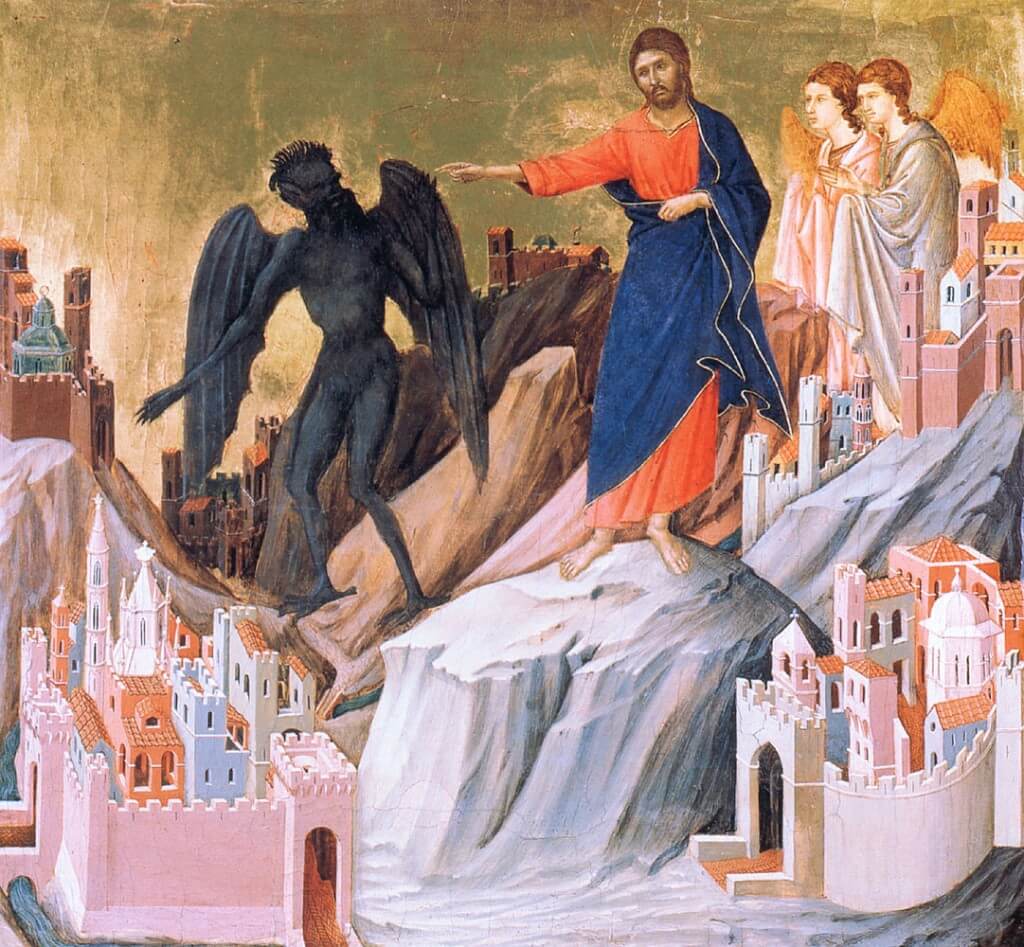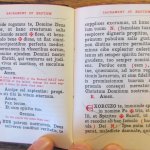Some weeks ago, the Jesuit superior general Fr. Arturo Marcelino Sosa Abascal made international news with his remarks denying the real personal existence of the devil and reducing him to a man-made symbol of evil. Ho-hum, one might say: we expect this kind of heresy from modern liberal Jesuits — even if the Jesuit who holds the papal throne seems to be orthodox on this point. Within hours, Catholics around the world had skewered the superior general, and his provocative claim, redolent of the 1970s, was reduced to a pile of smouldering ashes, having perhaps a whiff of sulphur.
When this news story hit, I began to think about a little Rituale Romanum I once saw: The Priest’s New Ritual for the Convenience of the Reverend Clergy in the Administration of the Sacraments and Various Blessings, compiled by the Rev. Paul Griffith, printed in Baltimore by John Murphy, 1927, reprinted 1941. I remember how my eyes grew wider and wider as I paged through the rite of baptism and saw how the owner of this manual had struck through with pencil all the exorcisms, probably in response to some confusing instruction from the Vatican in the tempestuous years following Sacrosanctum Concilium, when changes were coming down from on high just about every month, and nothing was certain except the uncertainty of the liturgy.
This got me thinking. Why, exactly, did we need to eliminate all those exorcisms? Because babies are not in the clutches of the Prince of This World and his ranks? Because the little innocent boys and girls do not need to be rescued and redeemed from the kingdom of darkness? Because original sin is a medieval exaggeration, and modern man can’t possibly take seriously the idea that each man is born into the enemy’s camp, estranged from God?
Whatever they were thinking, the result is obvious: the exorcisms were eliminated, and when the shiny new rite of baptism rolled off the assembly line, it said almost nothing about the devil or original sin. The one reference is narrative and not unambiguously applied to the child at hand. For decades now, Catholics have been listening to (and informed by) a baptismal rite that has almost nothing in common with the way baptismal liturgies had been conducted for twenty centuries in East and West — with the exception of the formula of baptism itself, which remains intact. “Ah, good,” you say, “the baptism is valid: that’s all that matters.” Really? That’s all that matters? This is the same pernicious neoscholastic reductionism that would reduce Holy Mass to a valid consecration. If all we need is sacramental formulas, we could reduce all the sacraments to 3-minute transactions, like an ATM machine.
Should we be so full of righteous indignation, then, at Fr. Arturo Marcelino Sosa Abascal? Or should we not redirect that indignation towards the liturgical vandals who first stripped our traditional rites of their abundant references to the devil — and towards the inadequate rites they fashioned to replace them?
I remember the first time I compared the traditional rite of baptism with its modern replacement. I could not believe my eyes. The difference is as night and day. If you have not made this comparison yourself, and especially if you are either a married person who will be bringing your children to the baptismal font, or a priest who will be baptizing (and who may, of course, freely utilize the older form of baptism as per Summorum Pontificum), I encourage you to take a little time to compare the two rites. This site conveniently gives the text of both. Some fine commentary may be found here, here (where a priest speaks of his first foray into the traditional form of baptism), and here (although the tables are not well aligned). Every Catholic has the canonical right to choose the traditional form of baptism for their children, and every Latin rite priest has the canonical duty to offer this form when asked.
My wife and I produced our own booklets when we had our children baptized in the traditional rite, and I’ve seen others do the same, but you may also purchase this very nice booklet that contains the entire rite in Latin and English, along with a number of extra ceremonies, prayers, and explanations.
Meanwhile, as a reminder of the iconoclasm we must leave behind, here are additional pages from that same pocket ritual. From demons and their dupes on earth, libera nos, Domine.










